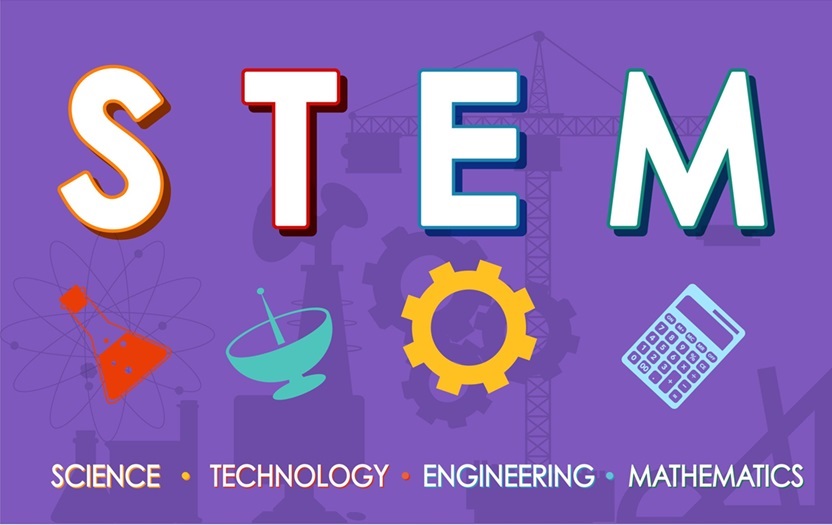STEM Education, an acronym for Science, Technology, Engineering, and Mathematics, represents one of the most sought-after fields in education and employment worldwide. A career in STEM Education not only opens up opportunities for high-paying jobs but also provides avenues for innovation and groundbreaking contributions in areas such as medicine, engineering, environmental science, data science, and artificial intelligence. With an increasing emphasis on STEM education globally, let’s explore STEM-related jobs, their salary prospects, admissions to top colleges, and the current and future demand for STEM professionals.
1. Understanding STEM Education and its Importance
STEM education emphasizes an interdisciplinary approach, integrating science, technology, engineering, and mathematics. This model encourages students to think critically, solve complex problems, and apply theoretical knowledge in practical situations. Governments and educational institutions worldwide promote STEM learning due to its potential to drive economic growth, technological advancements, and global competitiveness.
In addition to the technical skills required in STEM Education fields, students also develop soft skills like teamwork, critical thinking, and creativity. These skills make STEM graduates highly adaptable to an ever-evolving job market.
2. Admission Requirements for STEM Programs
STEM programs are offered at undergraduate, graduate, and doctoral levels, with each level presenting unique admission requirements. Here’s a closer look:
- Undergraduate Programs:
- Academic Requirements: Students must have a strong background in mathematics and science (especially physics, chemistry, and biology) at the high school level.
- Standardized Tests: In many countries, admission to top STEM programs requires scores from standardized tests such as the SAT (in the U.S.) or equivalent tests in other countries.
- Extracurriculars: Participation in science fairs, coding camps, and robotics competitions can bolster applications.
- Graduate Programs:
- Prerequisites: Applicants usually need a bachelor’s degree in a related field.
- Standardized Tests: GRE scores are commonly required for admission to master’s and Ph.D. programs.
- Research or Work Experience: STEM graduate programs may prefer applicants with relevant research experience or internships.
- Statement of Purpose and Recommendations: Most programs require a personal statement and letters of recommendation from faculty or employers.
3. Top STEM Colleges in the World
Several institutions worldwide are renowned for their STEM programs. These colleges offer exceptional resources, cutting-edge research facilities, and industry connections, giving students a significant advantage in the job market. Here are some of the best:
- Massachusetts Institute of Technology (MIT), USA: Known globally for its emphasis on research and innovation, MIT is a leader in computer science, engineering, and natural sciences.
- Stanford University, USA: Stanford is renowned for its strong emphasis on technology and innovation, especially in areas such as computer science, AI, and data science.
- California Institute of Technology (Caltech), USA: Caltech offers specialized programs in engineering and physical sciences and is known for its rigorous academic standards.
- University of Cambridge, UK: Cambridge’s engineering and natural sciences programs are highly esteemed, producing top professionals and researchers.
- ETH Zurich, Switzerland: ETH Zurich is one of Europe’s most respected universities, particularly known for engineering and computer science programs.
- National University of Singapore (NUS), Singapore: NUS is recognized for its focus on technology and biomedical sciences, ranking as one of Asia’s top institutions.
- Indian Institute of Technology (IIT), India: The IITs, especially IIT Bombay and IIT Delhi, are globally acclaimed for their engineering and technology programs.
- University of Tokyo, Japan: This university is one of Asia’s premier institutions, known for its research in robotics, engineering, and biotechnology.
Each of these institutions offers unique programs and research opportunities, making them ideal choices for students interested in STEM careers.
4. Popular STEM Careers, Job Roles, and Salaries
STEM careers span across various industries, including technology, healthcare, environmental science, manufacturing, and finance. Below are some of the most in-demand STEM jobs, along with their average annual salaries:
- Data Scientist: Data scientists analyze large sets of data to derive insights that help organizations make informed decisions.
- Average Salary: $90,000 to $140,000
- Top Employers: Google, Amazon, IBM, financial institutions
- Software Engineer: Software engineers design, develop, and maintain software applications.
- Average Salary: $80,000 to $130,000
- Top Employers: Microsoft, Apple, Facebook, various tech companies
- Biomedical Engineer: This role involves applying engineering principles to healthcare and biological systems, often developing medical devices.
- Average Salary: $70,000 to $120,000
- Top Employers: Medtronic, GE Healthcare, Johnson & Johnson
- Environmental Scientist: Environmental scientists focus on understanding and mitigating environmental issues like pollution and climate change.
- Average Salary: $60,000 to $100,000
- Top Employers: Government agencies, non-profits, environmental consultancies
- Aerospace Engineer: Aerospace engineers design aircraft, spacecraft, and related systems.
- Average Salary: $85,000 to $130,000
- Top Employers: NASA, Boeing, Lockheed Martin
- Mechanical Engineer: Mechanical engineers design mechanical systems and devices used in manufacturing, transportation, and various other sectors.
- Average Salary: $70,000 to $110,000
- Top Employers: General Motors, Ford, Siemens
- Artificial Intelligence/Machine Learning Engineer: Specializes in creating algorithms and models that enable machines to learn from data.
- Average Salary: $100,000 to $150,000
- Top Employers: Amazon, NVIDIA, Facebook, AI research labs
Salaries for STEM roles vary by region, company size, and experience level, but these roles generally offer competitive wages and growth potential.
5. Demand for STEM Professionals
STEM professionals are in high demand due to the technological advancements driving changes in every industry. The following trends reflect the growing need for skilled STEM workers:
- Tech Industry Boom: With the rise of artificial intelligence, data science, and the Internet of Things (IoT), companies are actively seeking professionals skilled in these areas.
- Healthcare Advancements: Biomedical engineers and data scientists are critical in healthcare, especially in developing medical devices, diagnostics, and treatment plans.
- Environmental and Renewable Energy: As climate change becomes a global concern, environmental scientists, and renewable energy engineers are increasingly needed to address environmental challenges.
- Automation and Robotics: Manufacturing, logistics, and even retail are turning to automation and robotics to enhance efficiency, creating a demand for engineers and AI specialists.
Countries worldwide are focusing on building a workforce that can meet the demands of these evolving industries. In the U.S., for example, the Bureau of Labor Statistics (BLS) projects STEM job growth of 8% from 2019 to 2029, which is higher than the average for other fields.
6. Salary Expectations for STEM Education
STEM graduates enjoy some of the highest starting salaries across all fields, with compensation generally increasing with experience and specialization. Here’s a closer look at typical salary ranges:
- Entry-Level Salaries: Bachelor’s degree holders in STEM fields generally start with salaries ranging from $60,000 to $80,000 annually, with certain fields like data science and AI engineering offering higher starting wages.
- Mid-Level Salaries: Professionals with 5-10 years of experience can expect to earn between $80,000 and $120,000. Specialized roles, such as those in aerospace engineering or biotechnology, may command higher pay.
- Senior-Level Salaries: Senior-level and managerial roles often come with salaries of $120,000 or more, particularly in sectors like AI, software development, and biomedical engineering.
- Top-Level Salaries: Executives and top experts in STEM can earn upwards of $200,000 annually. Positions like chief technology officers (CTOs) or research directors at large companies come with lucrative pay packages and bonuses.
7. Future Prospects and Emerging Trends in STEM
The field of STEM is constantly evolving, with several emerging trends indicating promising future opportunities for STEM professionals:
- Quantum Computing: Quantum computing is poised to revolutionize fields such as cryptography, complex simulations, and materials science.
- Genomics and Bioinformatics: The rapid growth in genomics is creating demand for bioinformatics experts and geneticists, especially in personalized medicine and pharmaceuticals.
- Renewable Energy Technology: As countries shift to sustainable energy, jobs in solar, wind, and other renewable energy sectors will continue to grow.
- Space Exploration: With private companies like SpaceX and government agencies aiming for space exploration, careers in aerospace engineering and space sciences are expanding.
- Smart Cities and IoT: The development of smart cities and IoT applications is driving demand for STEM professionals skilled in AI, data science, and network engineering.
8. Additional Resources for STEM Students
To excel in STEM, students and professionals alike must stay updated with industry trends and advancements. Here are some valuable resources for continuous learning:
- Online Learning Platforms: Platforms like Coursera, edX, and Udacity offer specialized STEM courses, often taught by industry experts. STEM Education
- Professional Associations: Membership in organizations such as the IEEE, American Chemical Society, or Society of Women Engineers can offer networking opportunities and resources.
- Coding Bootcamps and Workshops: For skills in programming and software development, coding bootcamps like General Assembly or Code academy are beneficial.
Conclusion
Pursuing a career in STEM offers numerous rewards, from competitive salaries and job stability to the opportunity to contribute to life-changing innovations. As technology continues to advance and the global economy increasingly relies on technical expertise, the demand for skilled STEM professionals will only grow. For students and professionals, building a strong foundation through quality education, staying adaptable, and pursuing lifelong learning are the keys to thriving in this dynamic field.















Leave a Reply